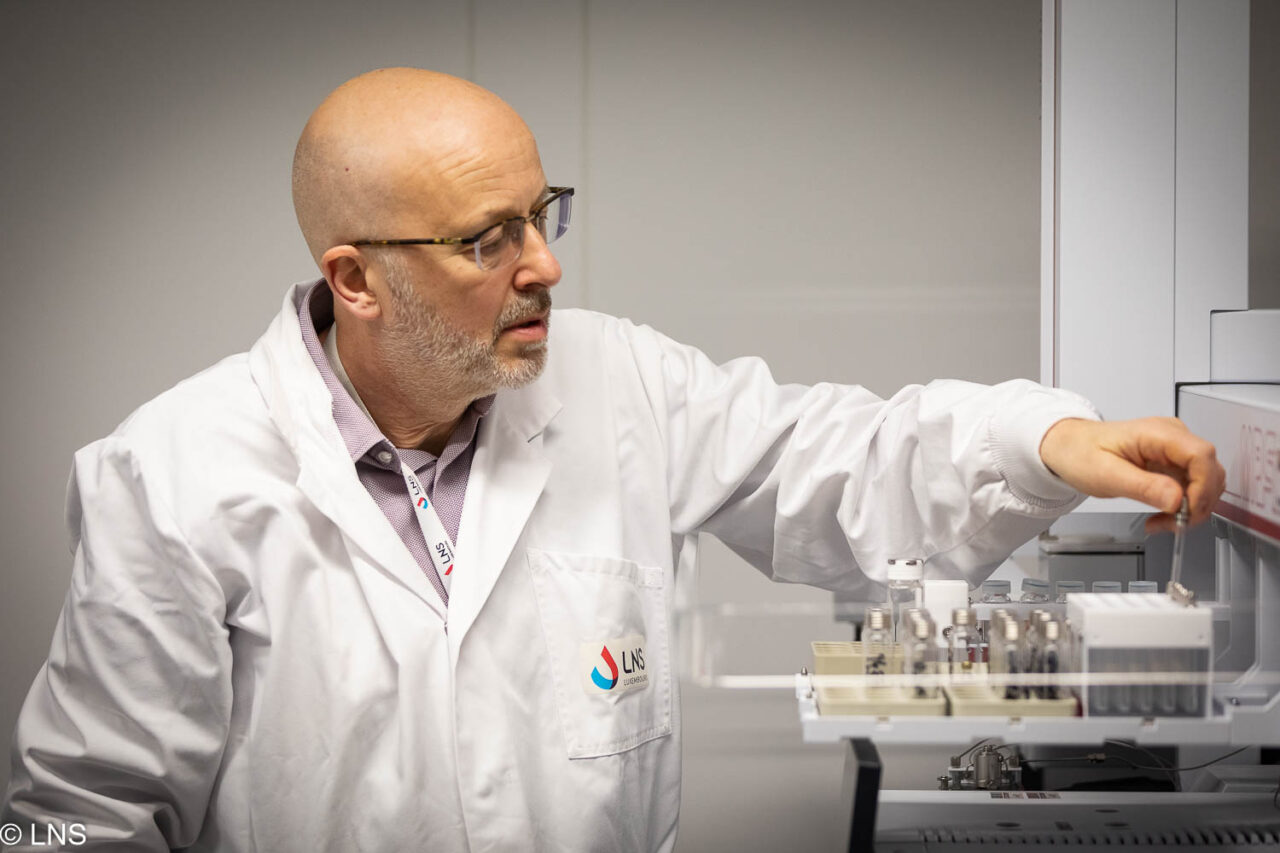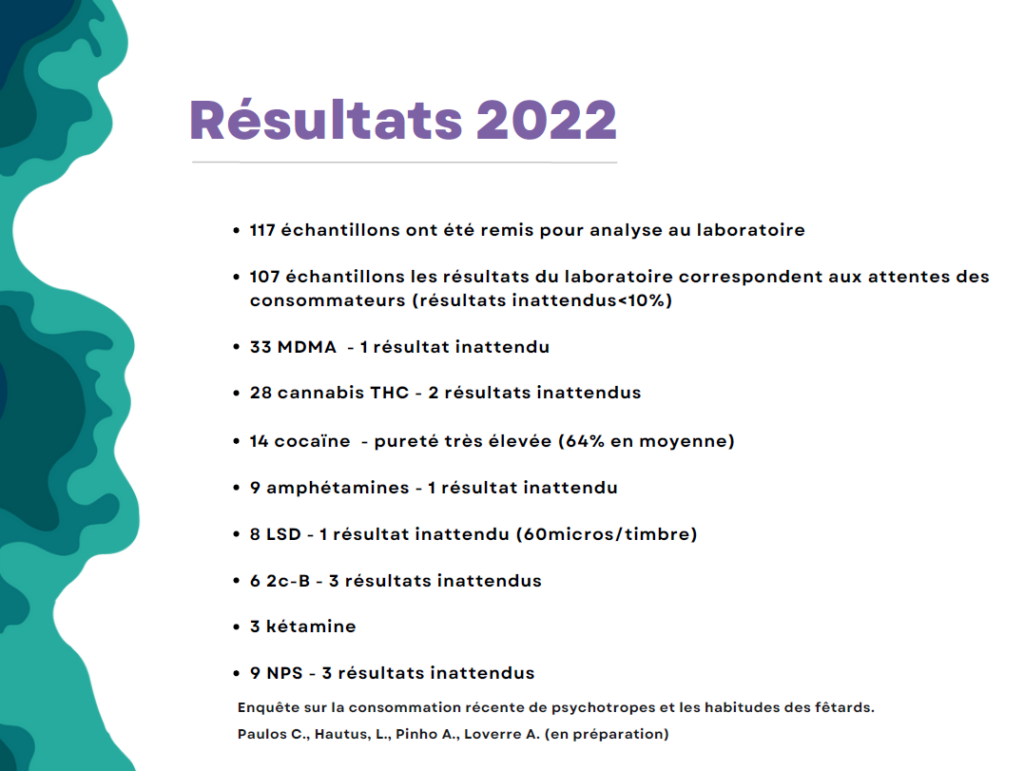- The Laboratory
- Organization
- Departments
- Jobs
- Analysis book
- Contact
- News
- Publications
- Download



LNS and the association 4motion are conducting a research project to monitor drug samples collected directly from consumers in festivals and nightclubs. In 2022, 117 samples were analyzed, leading to guidance toward safer consumption.
Since 2016, LNS and 4motion, an association working in the fields of diversity and gender, equal opportunities and party culture education, have been cooperating in the PIPAPO project. In collaboration with the organizers of musical or artistic events, a stand or a mobile team is set up to distribute earplugs, condoms and to conduct a survey on the recent consumption of psychoactive products among the party population.
A range of information on sexuality and drugs is also available to visitors and partygoers. Finally, a psychotropic substance analysis service is offered free of charge to consumers: “DUCK – DrUg ChecKing”. Small quantities of drugs are handed over by the consumers themselves to 4motion and are then analyzed in the Analytical Toxicology and Pharmaceutical Chemistry service of LNS for composition and quality control. The project is supported by the Ministry of Health, with the authorization of the Public Prosecutor’s Office to set up the system.
Why is this important?
According to the latest report from the European Monitoring Centre for Drugs and Drug Addiction (EMCDDA), Europe today faces a more complex drug situation, characterized by increased availability and greater diversity in drug use patterns. “We see from our reporting on the new psychoactive substances phenomenon that almost anything that has psychoactive potential is now at risk of appearing on the market, often mislabelled, meaning that those consuming these substances may be unaware of what they are actually using.” This alarming fact makes drug checking services all the more important because they can:
What is the impact of the project?
In 2022, 117 samples of 10 to 20 milligrams were collected and analyzed by LNS within the Analytical Toxicology-Pharmaceutical Chemistry service.
Among these 117 samples, 107 corresponded to the substance expected by the consumer (see illustration further below). In rare cases, new psychoactive substances (NPS) were detected. “In our analyses, it is not only about identifying the constituents of the substances, but also about determining the concentrations we are dealing with. The majority of the samples we analyze are composed of several substances. We determine the exact qualitative and quantitative composition in two sample examinations,” explains Dr. sc. Serge Schneider, head of the analytical toxicology – pharmaceutical chemistry service.
4motion is then in charge of the personalized communication of the results, along with prevention and risk reduction messages. No personal data is recorded within the framework of the project.
“The aim is to raise awareness among consumers of psychotropic substances by enabling them to assess the risks of their own consumption”, explains Dr Carlos Paulos, Director of 4motion. “Most wait for the results of the analyses before consuming,” he continues. “When we send the results, totally anonymously, we always accompany them with messages of awareness about the risks of drug use.”
In case a substance or product with an increased toxicity risk is detected, an alert system is set up:
